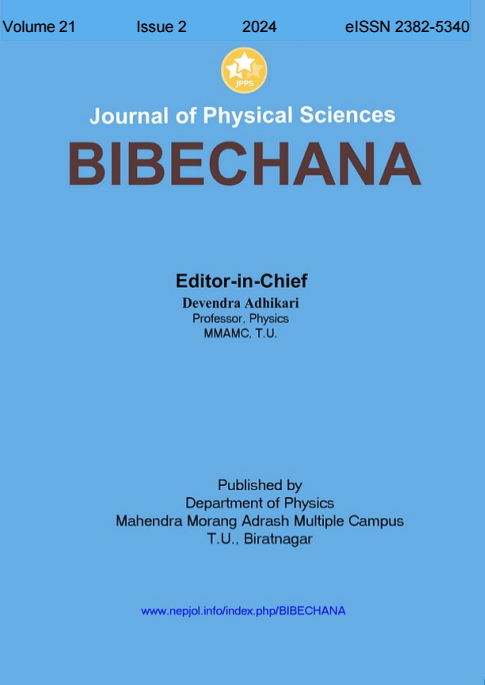Dwarf galaxy merger-induced star formation rate: A case study of Mrk 1481
DOI:
https://doi.org/10.3126/bibechana.v21i2.60334Keywords:
Dwarf Galaxy, Galaxy Merger, Star Formation Rate, Galaxy MorphologyAbstract
The merger of the galaxies serves as a trigger for the increase in the galaxy’s star formation rate (SFR), which can be quantified by observing the column density of the Hα line. Our findings report the presence of various gas and metal emission lines, strongly indicating that the galaxy hosts very young stars and is currently undergoing active star formation processes. Notably, we report a relatively high SFR of ∼ 0.0055 M⊙ yr-1 for a dwarf galaxy, alongside a metallicity level of 12 + log(O/H) ∼ 8.88 dex. Our photometric analysis reinforces the notion that the galaxy is in the midst of a merger phase. Additionally, the analysis indicates that the galaxy has a relatively flat shape (Sérsic index ∼ 0.8), with stars distributed more broadly and less concentrated toward its center. This provides further evidence of the ongoing merger and its impact on the galaxy’s structure. The half-life radius of the galaxy is estimated to be 2.73 arcsec by using the Petrosian method.
Downloads
Downloads
Published
How to Cite
Issue
Section
License
Copyright (c) 2024 The Author(s)

This work is licensed under a Creative Commons Attribution-NonCommercial 4.0 International License.
This license enables reusers to distribute, remix, adapt, and build upon the material in any medium or format for noncommercial purposes only, and only so long as attribution is given to the creator.




